Air Fryer or Microwave: Convenience Cooking Battle
Air fryers have transformed home cooking with their ability to create crispy, delicious meals using minimal oil.
These innovative kitchen appliances circulate hot air around food, producing results similar to deep-frying but with healthier outcomes.
Microwaves, on the other hand, heat food through electromagnetic radiation for quick and convenient meal preparation.
Many households now consider both appliances essential for different cooking needs and situations.
The contrast between crispy exteriors from air fryers and rapid heating from microwaves represents two distinct cooking philosophies.
Each option offers unique benefits that cater to various culinary preferences and time constraints.
Understanding the strengths of these kitchen powerhouses will help you make better decisions about which to use for specific recipes and everyday meals.
Air Fryers – Exploring This Kitchen Wonder
Air fryers create deep-fried taste without the oil by using hot air circulation. These kitchen heroes consist of four key parts working together seamlessly.
The heating section generates intense heat while the powerful fan system pushes this super-hot air throughout the food chamber, creating that perfect crispy exterior. With the handy switch panel, you can easily adjust cooking times and temperatures to match whatever delicious treat you're making.
Temperatures can climb all the way to 482°F, with cooking times ranging from just 5 minutes for lighter foods to 25 minutes for heartier dishes.
There are common types of air fryer: basket-type, oven-type, and paddle-type air fryer; so base on your needs to pick the most suitable one.
Using An Air Fryer In The Right Ways
Kitchen appliances such as air fryers come with important rules for proper use. Check these notes for using them right and safely.
Prepare and Load Your Food
Before cooking, place your air fryer on a stable, heat-resistant surface with good ventilation, avoid overcrowding the basket to ensure proper air circulation, and preheat the fryer for 2 to 5 minutes (or use the preheat setting if available) to promote even cooking and crispiness.
Set the Temperature and Time Correctly
Different foods require different temperatures and cooking times. Most air fryers allow you to set temperatures up to 400°F and timers from 5 to 25 minutes. Always refer to your recipe or the appliance’s manual for guidance. Setting the right temperature and duration is key to avoiding burnt or undercooked food.
Monitor and Flip Food as Needed
During cooking, check your food periodically. For even crisping, especially with thicker or irregularly shaped items, flipping or shaking the basket halfway through cooking is often necessary. Some air fryers come with reminders to shake or flip, but if yours doesn’t, set a timer to remind yourself.
Finish and Clean Properly
Once cooking is complete, carefully remove the basket and transfer your food. Cleaning your air fryer after each use is crucial to maintain performance and hygiene. Most baskets and trays are removable and dishwasher-safe; wash these parts thoroughly to prevent grease buildup and odors.
The Benefits And Drawbacks Of Air Fryers
Air fryers score big points by creating crispy food with much less oil, cutting down calories while still delivering that satisfying crunch we crave. Most models heat up quickly and cook faster than conventional ovens, making weeknight meals less of a hassle.
Cleanup tends to be simple since many parts are dishwasher-safe, and during summer months, they won't heat up your kitchen like a standard oven.
On the flip side, even large air fryers have limited capacity compared to regular ovens, making family-sized portions challenging.
Some foods just don't work well in them - particularly wet batters or anything that needs to be steamed.
Certain models can be noisy during operation, and cheaper units might not last as long as you'd hope.
Uncover The Best of Microwave
A microwave oven is a kitchen appliance that uses microwave radiation to heat and cook food quickly.
Unlike conventional ovens that rely on heat transfer through air or metal, microwaves use electromagnetic waves to excite water molecules inside food, generating heat from within. Microwaves produce high-frequency radio waves that penetrate food and cause water, fat, and sugar molecules to vibrate rapidly.
This vibration creates heat, cooking or warming the food efficiently and evenly.
Since the heat is generated inside the food, cooking times are much shorter compared to traditional methods.
Pros and Cons Of Microwaves
Microwave ovens bring both advantages and disadvantages to our kitchens. Many people love how these handy appliances heat food quickly and save precious time during busy days.
Modern models even come with special settings for different foods, making cooking much easier. Most microwaves are simple to clean and maintain compared to traditional ovens.
However, some dishes just don't taste as good when heated this way - foods often lose their crispy texture and sometimes dry out. Several nutritionists worry about potential nutrient loss when food is zapped instead of cooked traditionally.
Safety concerns exist too, especially regarding certain plastics that might release harmful chemicals when heated. For families with small children, hot spots in food can pose unexpected burn risks despite the overall convenience these machines provide.
Types Of Microwaves
Microwave ovens come in three main types at most stores: solo, grill, and convection models.
Solo Microwave Oven
The solo microwave is the most basic and widely used type.
It’s perfect for simple tasks like reheating leftovers, defrosting frozen foods, and basic cooking. However, it lacks grilling or baking capabilities.
Solo microwaves are usually affordable, energy-efficient, and easy to use, making them ideal for everyday kitchen needs where advanced cooking functions aren’t necessary.
Grill Microwave Oven
Grill microwaves build on the solo model by adding a grilling element, allowing you to grill, sear, and brown food in addition to reheating and defrosting. This makes them versatile for cooking items like grilled sandwiches, kebabs, or roasting small portions.
While grill microwaves offer more cooking options, their baking ability is limited compared to convection models.
They are a mid-range choice, balancing cost and functionality.
Convection Microwave Oven
Convection microwaves combine microwave technology with a built-in convection heating system and a grill.
This lets you bake, roast, grill, and cook food evenly, much like a traditional oven but faster and more compact.
They can handle a wide range of cooking tasks, from baking cakes and cookies to roasting meats.
Although convection microwaves tend to be pricier, their versatility and performance make them a popular choice for those wanting an all-in-one appliance.
The Similarities Of Air Fryers And Microwaves
The Differences Between Air Fryer and Microwave
This table highlights how both appliances are convenient and safe, but they also have several things to differentiate. Read on!
| Feature | Air Fryer | Microwave |
| Cooking Technique | Heating coil warms up, then fan circulates hot air to crisp food | Magnetron generates microwaves that vibrate water molecules to heat food internally |
| Design | Comes in cylindrical, oven-type, and paddle shapes; compact and lightweight | Typically rectangular; larger and heavier; bigger cooking capacity |
| Versatility | Best for crispy foods like bacon, chicken, steaks, tofu | Excellent for reheating, boiling, and cooking liquids; less effective for crisping |
| Time Consumption | Longer cooking times (15-20 minutes); preheat needed | Very fast cooking (seconds to minutes); quick reheating |
| Power Consumption | Up to 1700 watts; no standby energy use; adjustable time and temperature | Around 1200 watts; consumes small energy in standby/reheat mode |
| Cooking Temperature | Can reach over 400°F for crisping | Max temperature ~212°F, limited by boiling point of water |
| Capacity & Size | Smaller capacity (~5 liters); fits small kitchens | Larger capacity (~45 liters); suited for bigger kitchens |
| Food Results | Crispy, flavorful, retains more nutrients | Faster cooking but food can be soggy; slight nutrient loss possible |
| Cleaning & Maintenance | Easy to clean removable parts; minimal upkeep | Difficult to clean; only turntable removable; requires regular maintenance |
Cooking Technique
Air fryers cook by using a heating coil to generate heat, which is then circulated rapidly by a fan around the food. This hot air circulation mimics frying by crisping the food’s exterior without the need for excessive oil, producing a texture similar to deep-fried dishes but healthier.
In contrast, microwaves use a magnetron to emit electromagnetic waves that cause water molecules inside the food to vibrate, generating heat from within. This internal heating cooks food quickly but typically does not produce a crispy exterior, as microwaves primarily steam the food rather than dry it out.
Design
Air fryers come in various shapes: cylindrical, oven-style, and paddle-type, which influence their size, capacity, and cooking method. They are generally compact and lightweight, making them ideal for smaller kitchens or countertops with limited space.
Microwaves almost universally have a rectangular box design, with a larger internal cavity to accommodate bigger portions. This shape allows microwaves to cook larger quantities of food at once but also means they take up more space and are usually heavier than air fryers.
Versatility
Noticeable differences exist between two popular kitchen gadgets despite their similarities. The key contrasts often relate to size, function, and ease of use - factors that can significantly impact daily meal preparation.
These differences might seem small at first glance, but they become important during regular cooking sessions. Taking time to compare these devices can lead to better kitchen efficiency and more enjoyable cooking experiences overall.
Time Consumption
Microwaves are known for their speed, often cooking or reheating food within seconds to a few minutes, making them the go-to appliance for fast meal prep. They preheat instantly and heat food from the inside out.
Air fryers require preheating (usually 2–5 minutes) and longer cook times, often 15–20 minutes or more, because they rely on circulating hot air to cook food thoroughly and achieve crispiness. Thus, microwaves are more suitable when time is extremely limited, whereas air fryers require more patience for a crunchy result.
Power Consumption
Air fryers generally use more power (up to about 1700 watts) due to their heating elements and fans working for longer periods. However, they do not consume energy in standby mode, making them energy-efficient for their cooking times.
Microwaves typically use around 1200 watts but can consume a small amount of power (2–7 watts) while in standby or reheat modes. The shorter cook times of microwaves often translate to less total energy used per cooking session, but continuous standby power can add up over time.
Cooking Temperature
Air fryers can reach temperatures over 400°F (204°C), allowing them to brown and crisp foods effectively, much like a traditional fryer or oven. This high heat is essential for producing that desirable fried texture.
Microwaves, on the other hand, heat food by exciting water molecules and generally do not exceed 212°F (100°C), the boiling point of water. This temperature limitation means microwaves can steam but cannot brown or crisp foods on their own unless paired with convection or grilling features.
Capacity & Size
Microwaves typically offer larger cooking capacities, averaging around 45 liters, which lets users cook large batches or big items like whole casseroles or large plates of food. This makes microwaves well-suited for families or meal prepping.
Air fryers tend to be smaller, often with capacities up to about 5 liters, making them better suited for singles, couples, or small kitchens where space is a premium. The compact size of air fryers also makes them easier to move and store.
Food Results
Air fryers take longer to cook food but reward the wait with crispy, evenly cooked, and flavorful results that closely mimic traditional fried foods but with less oil. This method retains more nutrients and produces healthier meals.
Microwaved food cooks faster but can end up soggy or unevenly heated, especially for fried or baked dishes. Microwaves may also cause some nutrient loss and can produce acrylamide, a potential health concern linked to certain cooking methods.
Cleaning & Maintenance
Cleaning an air fryer is generally straightforward because many parts, like the basket and tray, are removable and often dishwasher-safe. The compact design means less surface area to clean, and regular maintenance is minimal.
Microwaves require more careful cleaning due to their larger, enclosed interior and non-removable walls. Only the turntable is usually removable, and cleaning the oven walls can be challenging without damaging components.
Frequent cleaning is essential to prevent odors and buildup, and components like light bulbs or the turntable may need replacement over time.
When You Should Choose Air Fryers
When You Should Choose Microwave
Tips for Buying Good Air Fryer or Microwave
Top-Rated Air Fryers & Microwaves In The Market
Many people consider buying a combined air fryer and microwave unit as the ideal option for their kitchen. If you prefer to have separate appliances instead, I've compiled a comprehensive list of top-quality air fryers and microwaves currently available in retail stores.
Ninja Foodi 8-Quart 9-in-1 Deluxe XL Pressure Cooker & Air Fryer
Cosori Pro Air Fryer Oven Combo (5.8 Quart)
Philips Premium Airfryer XXL
Instant Vortex Plus 7-in-1 Air Fryer Oven (6 Quart)
Got Questions? We’ve Got Solutions
1. Can air fryers replace microwaves in my kitchen?
While both are convenient, they serve different purposes. Air fryers excel at crispy foods like fries and chicken wings, while microwaves are better for quick reheating and defrosting. Most households benefit from having both.
2. Which one uses more electricity?
Microwaves typically use less electricity than air fryers. A standard microwave uses about 1200 watts but runs for shorter times (1-5 minutes), while air fryers use 1400-1700 watts and run longer (10-25 minutes).
3. Is food healthier when cooked in an air fryer compared to a microwave?
Air fryers can produce healthier versions of traditionally fried foods using minimal oil. Microwaves don't add unhealthy elements to food but don't create the crispy texture many people enjoy.
4. Which appliance is easier to clean?
Microwaves are generally easier to clean - just wipe down the interior. Air fryers have more removable parts (basket, tray) that need washing after each use, though many are dishwasher safe.


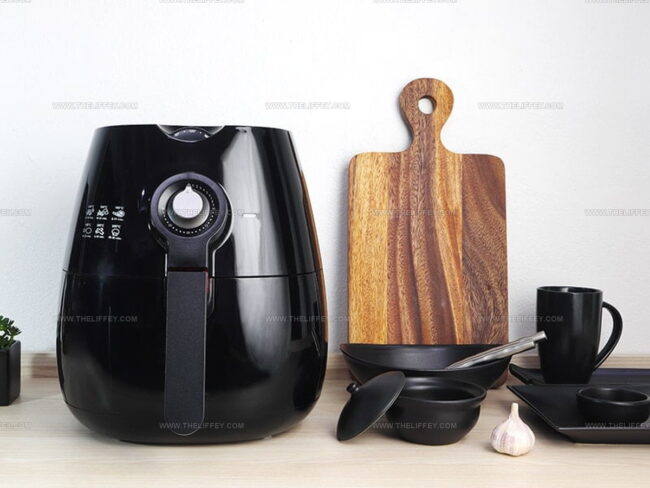

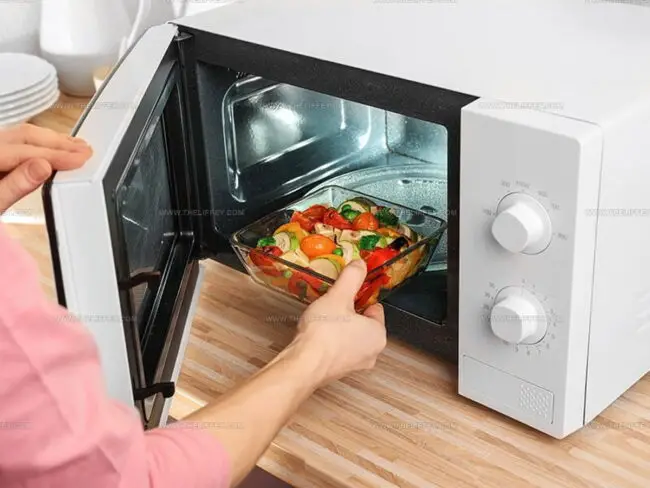
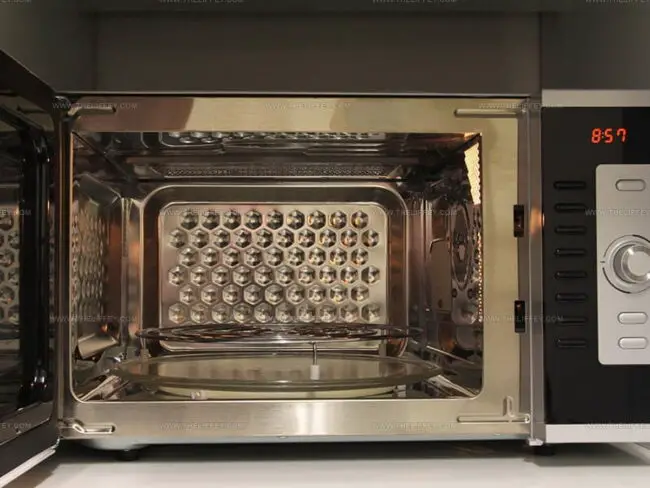
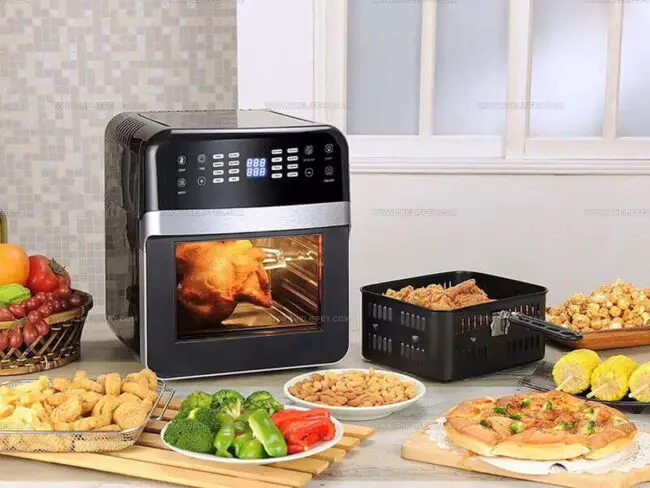

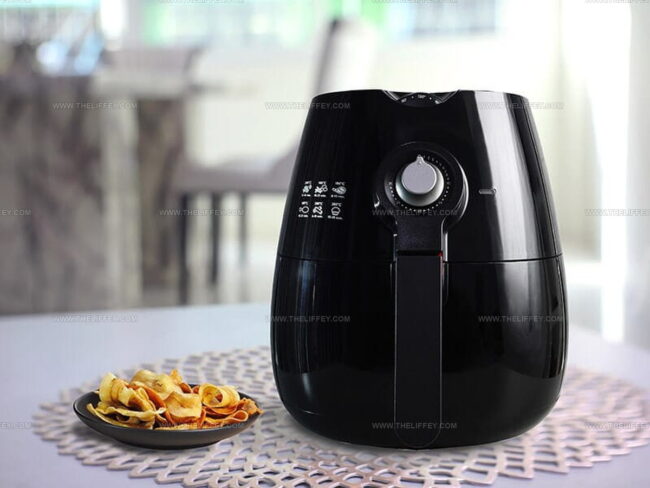
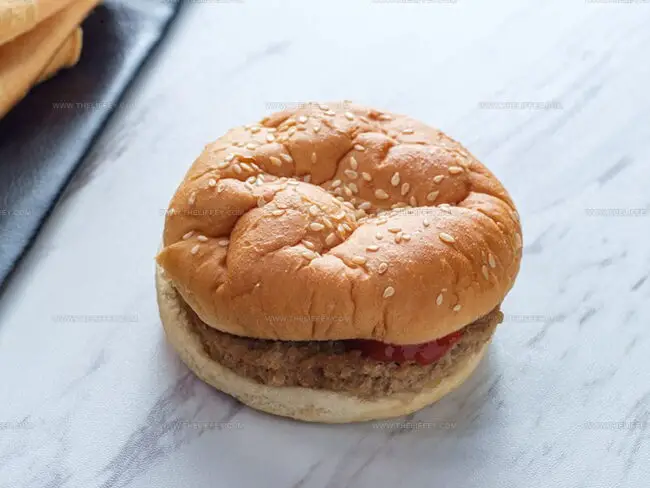

John Conley
Founder & Culinary Storyteller
Expertise
Recipe Development, Culinary Writing, Home Cooking Techniques, Seasonal Ingredient Utilization
Education
Lane Community College, Eugene, OR
Certificate in Culinary Arts
Focused on foundational cooking techniques, kitchen safety, and menu planning.
Gotham Writers Workshop, New York, NY
Course in Food Writing
Explored the art of crafting engaging culinary narratives and recipe development.
John grew up where food meant connection: big bowls, warm kitchens, and meals that told a story. After earning his Certificate in Culinary Arts from Lane Community College and diving deep into food writing at Gotham Writers Workshop, he found his calling: turning everyday recipes into something worth savoring.
At The Liffey, John’s focus is all about crafting dishes that feel easy, honest, and full of heart.